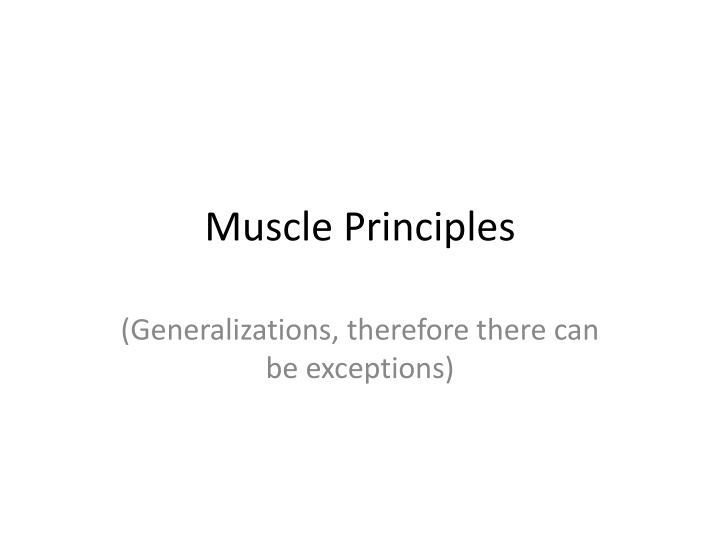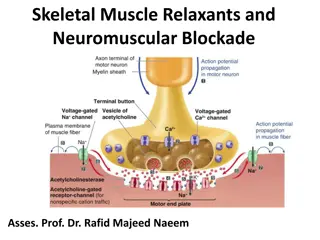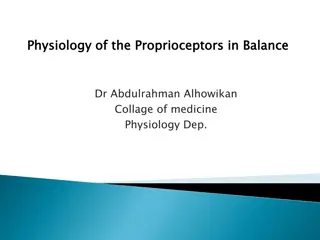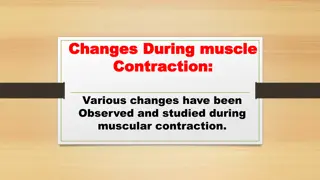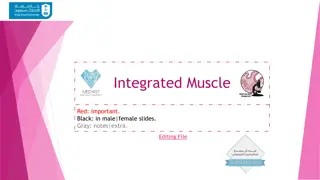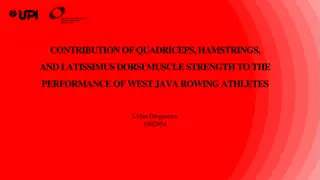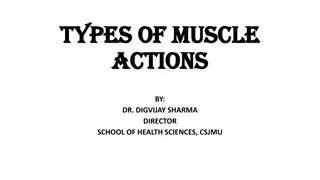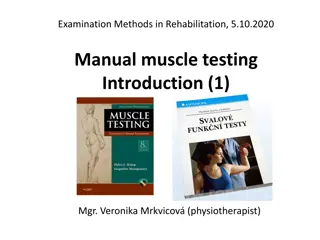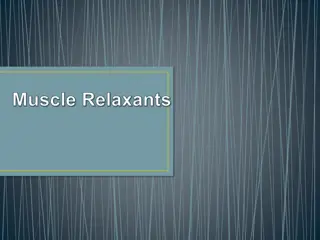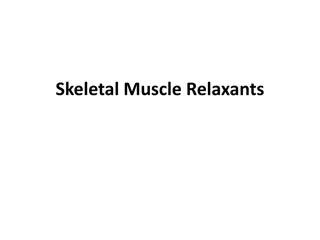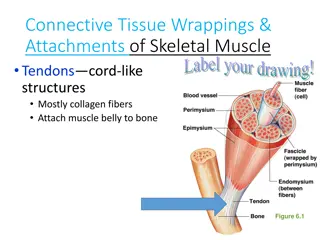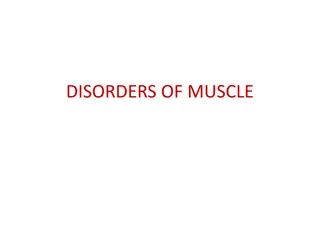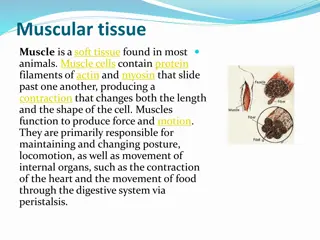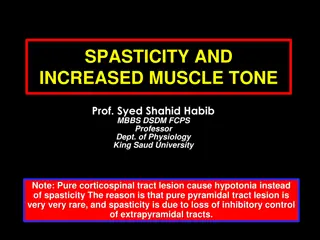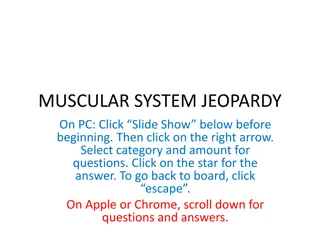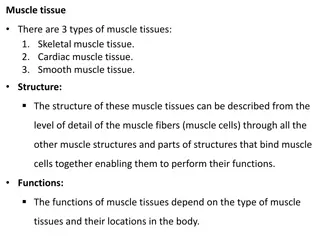Muscle Principles and Generalizations
Muscles play a crucial role in movement and functionality, following various general principles such as points of attachment, crossing joints to create movement, and shortening as they contract. There are exceptions to these principles, like isometric contractions. Understanding these principles helps in grasping the fundamental functions of muscles in the human body.
Download Presentation

Please find below an Image/Link to download the presentation.
The content on the website is provided AS IS for your information and personal use only. It may not be sold, licensed, or shared on other websites without obtaining consent from the author.If you encounter any issues during the download, it is possible that the publisher has removed the file from their server.
You are allowed to download the files provided on this website for personal or commercial use, subject to the condition that they are used lawfully. All files are the property of their respective owners.
The content on the website is provided AS IS for your information and personal use only. It may not be sold, licensed, or shared on other websites without obtaining consent from the author.
E N D
Presentation Transcript
Muscle Principles (Generalizations, therefore there can be exceptions)
Muscles have at least 2 points of attachment an origin and an insertion
Muscles attach to bones either by tendons or fleshy connections
Muscles must cross at least 1 joint to create movement (Exception: the face)
Muscles shorten as they contract (Exception: isometric contractions where muscle is activated but does not lengthen or shorten stays the same. Example: holding a box in front of you)
Muscles only work in antagonist pairs
Muscle fibers or tendons ultimately go in the direction that they pull
Flexors are on the ventral surface and extensors are on the dorsal surface
Muscles that cross one joint are deep and are for power and stability Muscles that cross many joints are superficial and are for speed and agility
Muscles for speed have parallel fibers (down hill), and muscles for power have fibers that run diagonally at an angle to the length (snow plow)
Small muscles create subtle movements, big muscles create gross movements
Muscles are named for a variety of reasons and the names help to remember something about each muscle Size, shape, direction of fiber, function/action, origin/insertion, combination
